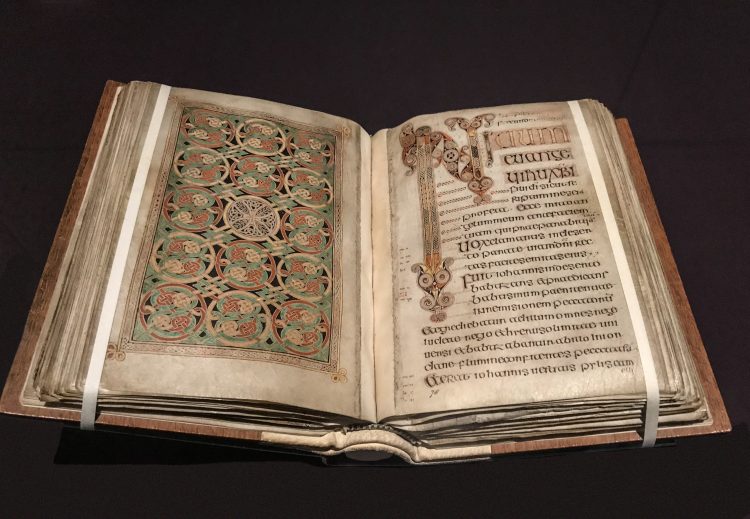From bibles and prayer books to bestiaries and herbals, medieval manuscripts demonstrate extraordinary diversity in subject matter and decoration. The term ‘medieval manuscript’ refers to books that were made in Europe between the fifth and fifteenth centuries. These were produced by hand and were typically written on either vellum (the skin of a cow) or parchment (the skin of a sheep). Some manuscripts were especially luxurious, adorned with decorated initials, pictures and elaborate designs, which were created using materials, including coloured pigments and gold leaf. These are known as ‘illuminated manuscripts’, a term which comes from the Latin word for ‘lit up.’ Here, discover some of the medieval world’s most incredible texts.
Codex Amiatinus
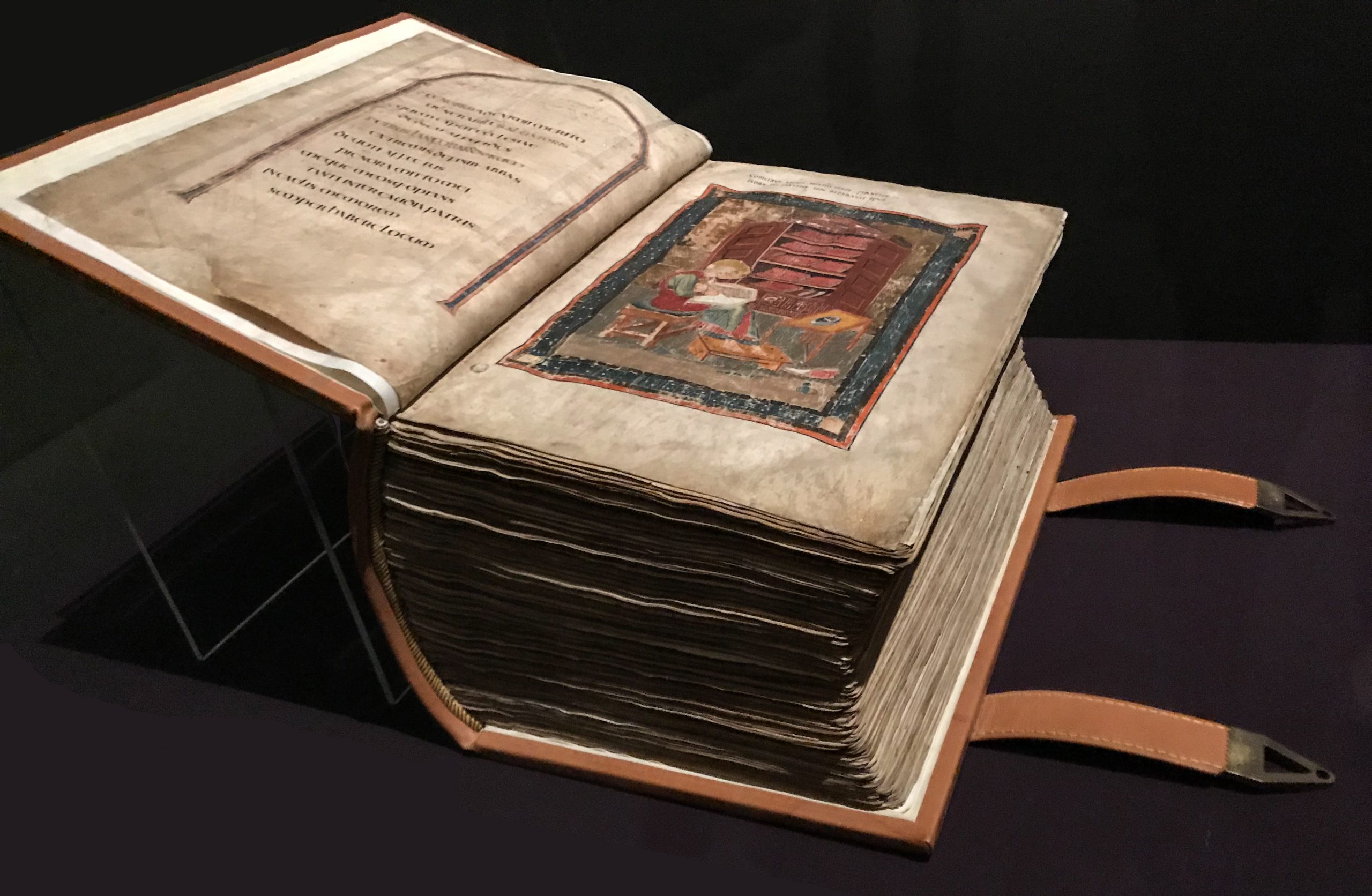
It’s not every manuscript that requires two people to lift it, but Codex Amiatinus is no ordinary text. The world’s oldest surviving complete Latin Bible, the work was created at the monastery of Wearmouth-Jarrow during the eighth century. In 716, Ceolfrith, the monastery’s abbot, took Codex Amiatinus with him on his final journey to Rome – a voyage that marked an eventful chapter in the manuscript’s history. Ceolfrith had intended to give the book as a gift to the shrine of St Peter the Apostle, but he died en route at Langres in Burgundy. His monks completed his mission, and for more than 1000 years, the work has remained in Italy. That is, until 2018, when Codex Amiatinus returned temporarily to the British Isles for the British Library’s Anglo-Saxon Kingdoms exhibition. The work is made from more than 500 animal skins and contains three elaborate paintings – such as the one above, which depicts the Old Testament prophet Ezra writing.
The Exeter Book
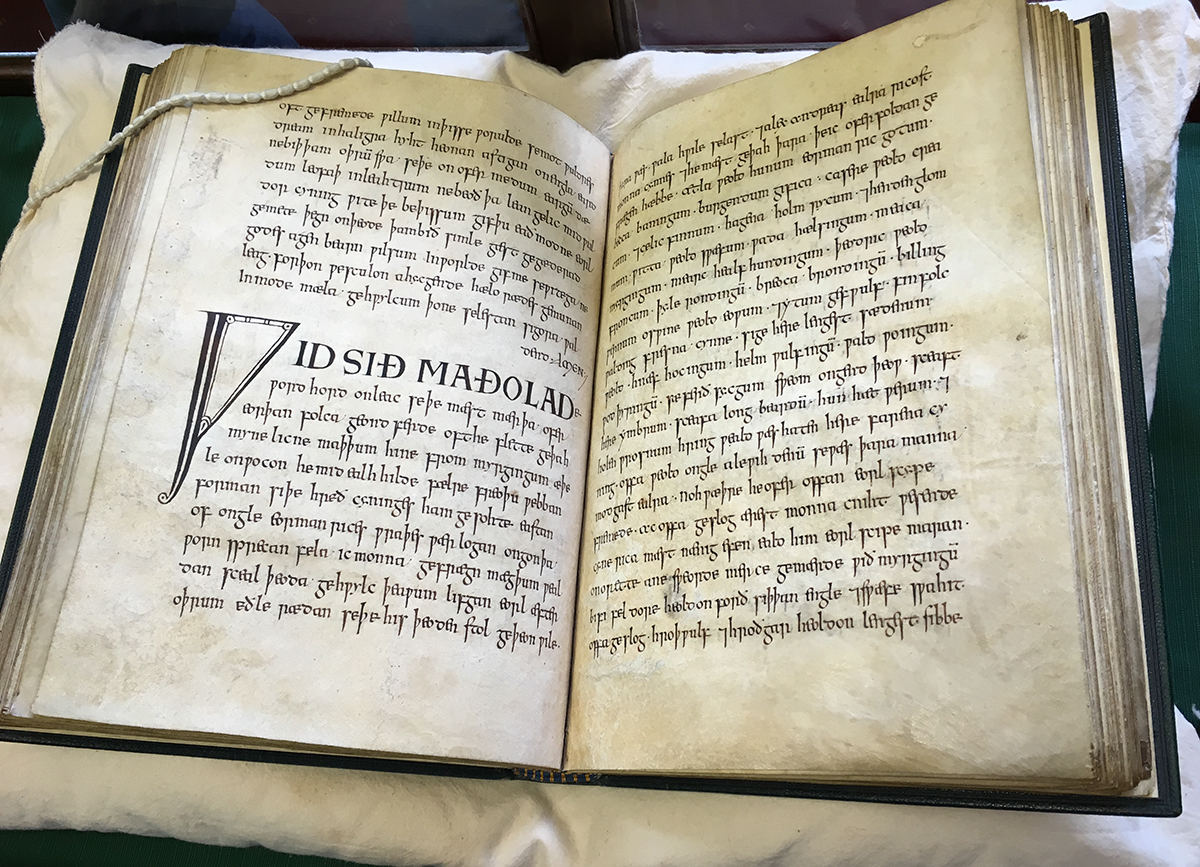
Described as ‘the foundation volume of English literature’ by UNESCO, the Exeter Book is one of Anglo-Saxon England’s greatest treasures. It was written in around 970 – most likely by a single scribe – and contains a variety of Old English verse, including The Seafarer and The Wanderer. These form part of a group of poems known as the ‘Old English elegies’ which draw on ideas including, exile, loss and earthly transience. The work famously contains almost one hundred riddles, which cover topics from onions to keys. For more information about the Exeter Book, click here to read my blog post. The Exeter Book is on display at Exeter Cathedral Library and Archives and can be seen by visitors on select days throughout the year.
Geoffrey Chaucer, The Canterbury Tales
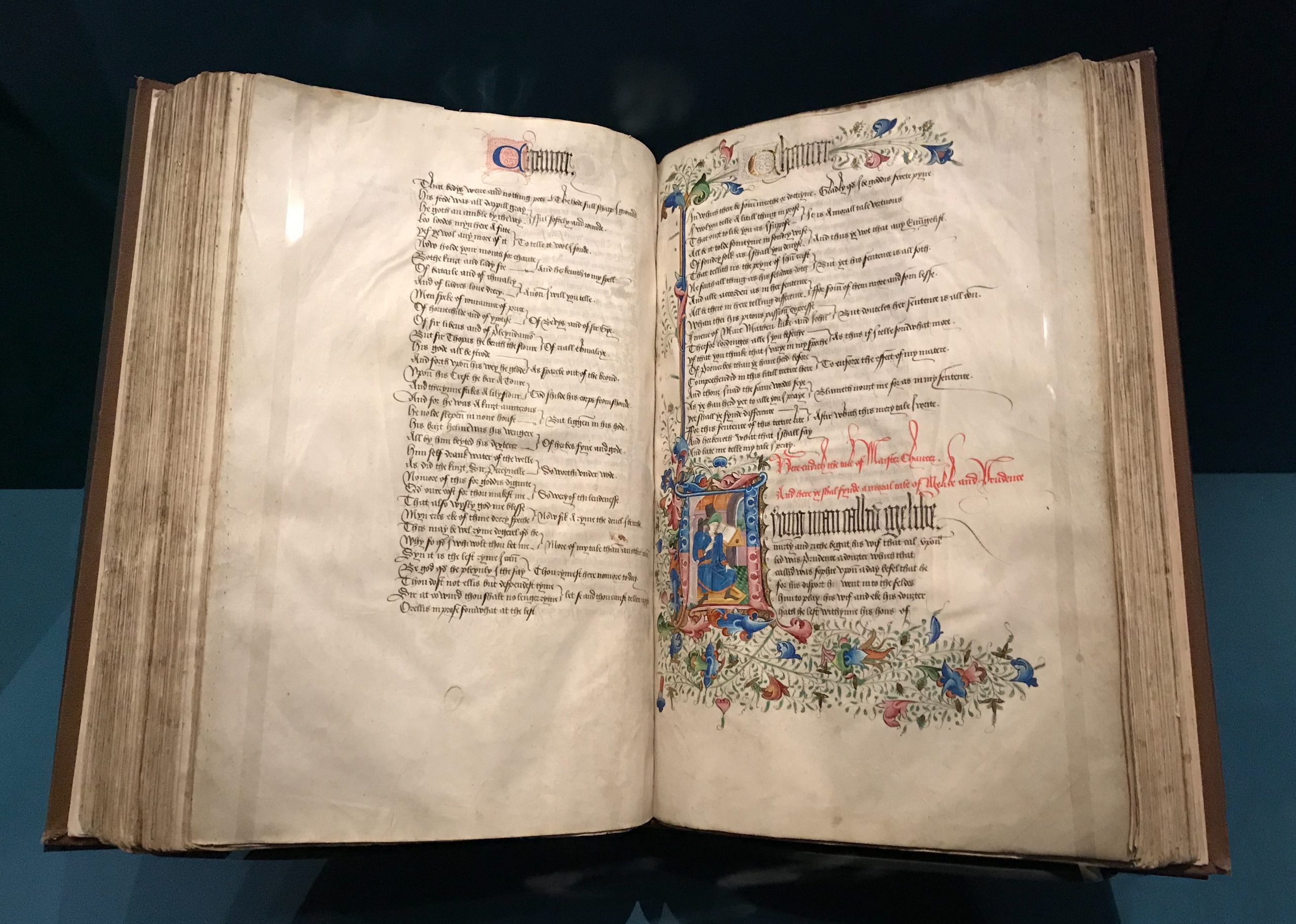
One of the most celebrated works of English literature, Chaucer’s poem follows the journey of a group of pilgrims who are travelling from London to St Thomas Becket’s shrine at Canterbury Cathedral. To pass the time, the pilgrims decide to hold a competition, with each member telling two tales on the way out and two more on the way home. The best storyteller will receive a free meal on their return to the Tabard Inn in Southwark. This manuscript (MS. Rawl. poet. 223) was made in the late fifteenth century and is part of the Bodleian Collections at the University of Oxford. The above page comes from ‘The Tale of Melibee.’ This story follows the dilemmas of Melibee, who debates whether to wreak revenge on the burglars who attacked his daughter, Sophia.
The Judith of Flanders Gospels

Adorned with silver-gilt and gems, this 11th century gospel-book belonged to Judith of Flanders (d.1094). An influential noblewoman, Judith was known for her piety. Together with her first husband Tostig, she became a benefactor of Durham Cathedral, and travelled to shrines in England and Rome. Following Tostig’s death in 1066, she married Welf IV, duke of Bavaria, and donated relics, vestments and books to his monastery at Weingarten in southern Germany. This text is one of four gospel-books associated with Judith and depicts Christ in glory and the Crucifixion. It is thought to have been used either in a church liturgical procession, or for personal devotion.
The Book of Durrow
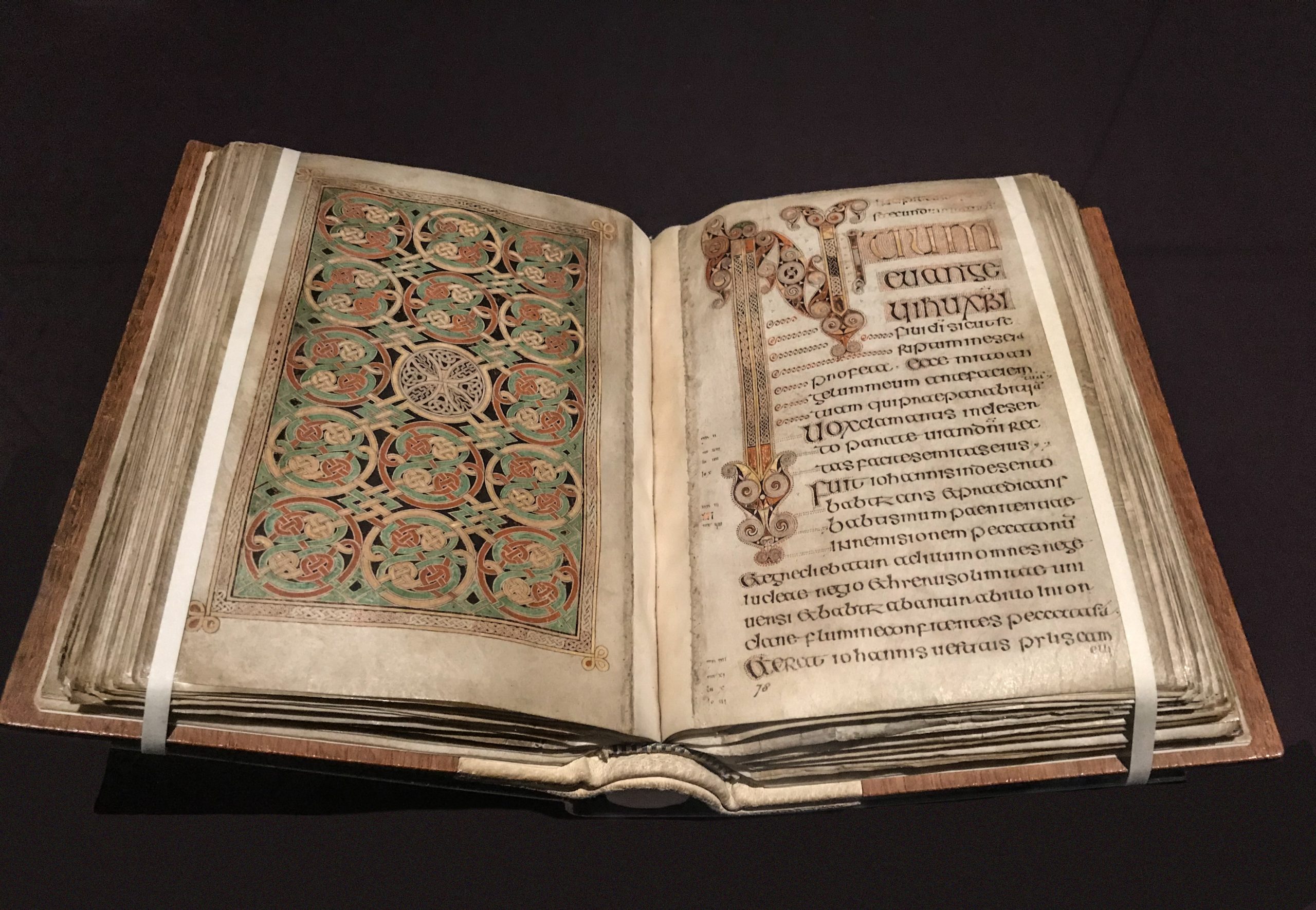
Believed to date back to c.680, this text is the earliest fully decorated gospel-book to survive from Britain or Ireland. Its decoration incorporates motifs found in Anglo-Saxon metalwork, including serpentine beasts – a symbol used on the Sutton Hoo gold belt buckle. The work also contains several ‘carpet pages,’ a term given to manuscript pages that are covered with intricate geometric patterns. These introduce each gospel, such as the above design, which appears before the Gospel of Mark.
The St Augustine Gospels
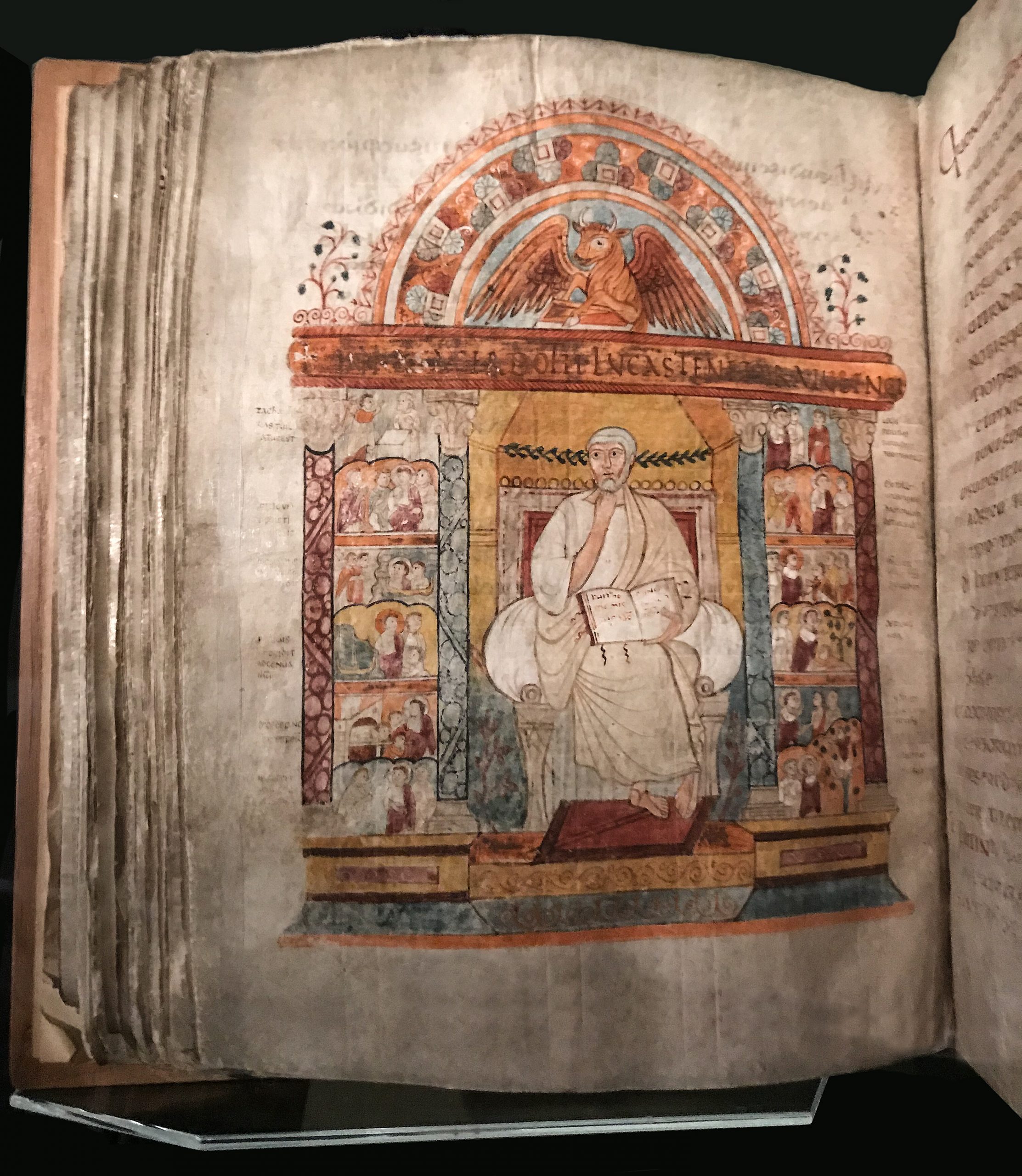
One of the oldest surviving books in Europe, this work is believed to have come to Kent in 597, as part of the mission of St Augustine. Under the direction of Pope Gregory I, St Augustine was sent from Rome to England to convert the pagan Anglo-Saxons to Christianity. A talented missionary, St Augustine influenced King Aethelberht and his court to become Christians, and later became the first archbishop of Canterbury. This text was made in Italy in the late 6th century, and its script and decoration helped to shape the appearance of English religious manuscripts. The spread above depicts St Luke, accompanied by scenes from his gospel.

